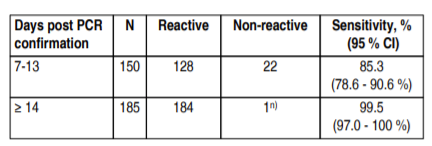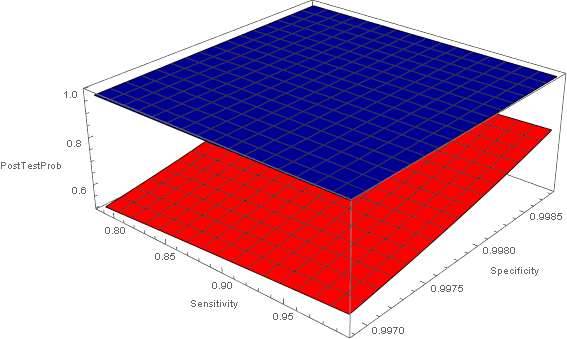Let& #39;s analyze the dialysis case from yesterday. We need to know :
a) the SAR (Secondary Attack Rate) of COVID19 for household transmission (pt had largely sheltered in, so could only have gotten it from a family member)
b) size of the household
c) the network of interactions https://twitter.com/cellotonelli/status/1329963338671955968">https://twitter.com/cellotone...
a) the SAR (Secondary Attack Rate) of COVID19 for household transmission (pt had largely sheltered in, so could only have gotten it from a family member)
b) size of the household
c) the network of interactions https://twitter.com/cellotonelli/status/1329963338671955968">https://twitter.com/cellotone...
The SAR of SARSCOV2/COVID19 has been variably estimated to be around 19% (see meta by @nataliexdean et al https://www.medrxiv.org/content/10.1101/2020.07.29.20164590v1)">https://www.medrxiv.org/content/1...
Household is about 6 members (5 +ve) and pt is a central node in the network (per our very diligent social worker)
Household is about 6 members (5 +ve) and pt is a central node in the network (per our very diligent social worker)
The family members all lead lives that put them out in the community ; they all seem to have gotten down with it at the same time, so it is very likely that they caught it independently. Either way, the probability that the patient did not get it from any of them is ….
*very* easy to compute. It is simply equal to
1-probability(of no transmission from any of them) =
1-(1-0.19)^5 ~ 0.35
So the pretest probability that the pt did not have COVID19 initially is 35%.
PCR sensitivity is 70% and specificity is 100% so ...
1-probability(of no transmission from any of them) =
1-(1-0.19)^5 ~ 0.35
So the pretest probability that the pt did not have COVID19 initially is 35%.
PCR sensitivity is 70% and specificity is 100% so ...
so post-test probability after the first negative PCR test is (1-sensitivity)/specificity = 0.3/1 = 0.3
This is not a good test to rule things https://www.aafp.org/dam/AAFP/documents/journals/afp/Likelihood_Ratios.pdfout
Pretest">https://www.aafp.org/dam/AAFP/... odds = 35/65 ~ 0.54
Posttest odds =0.54 x 0.3 = 0.16 or in 0.14 in probability scale
This is not a good test to rule things https://www.aafp.org/dam/AAFP/documents/journals/afp/Likelihood_Ratios.pdfout
Pretest">https://www.aafp.org/dam/AAFP/... odds = 35/65 ~ 0.54
Posttest odds =0.54 x 0.3 = 0.16 or in 0.14 in probability scale
SARSCOV2 spreads like wildfire in dialysis units. A medical director who chooses NOT to isolate when the probability is around 14% is playing Russian roulette (probability of getting the bullet is 1/6 or about 17%)
Similarly when the patient showed up the hospital, the correct decision was to emergently dialyze in isolation while waiting for the second test to come back.
Things get more interesting *after* the third negative test (remember we are now ~ day 8 of symptoms).
Things get more interesting *after* the third negative test (remember we are now ~ day 8 of symptoms).
At that time the CXR looked like diffuse multilobar pneumonia (I still don& #39;t believe that the CXR can tell you fluid, from Rona from other PNA and @RogueRad can correct me if I am wrong) but one had 3 negative PCR tests. There are 2 lines of thinking here - one is to treat
each PCR test as independent and apply the same test characteristics as the initial one. OR one could say the tests are correlated so just treat all subsequent PCR tests as having a LR of ~ 1 (I can convincingly argue both scenarios with myself).
So a 4th PCR was obtained with the patient on isolation in the outpatient unit at ~ day 10 and it was negative (found out on day 12-13) .
At that time one can declare the patient cleared ... OR note that we are past the 10 days and that the corporate lab offers an antibody test
At that time one can declare the patient cleared ... OR note that we are past the 10 days and that the corporate lab offers an antibody test
The test under consideration is the Elecsys total antibody test. These are the test characteristics https://www.fda.gov/media/137605/download">https://www.fda.gov/media/137...
The MD under consideration has to make a judgement call about the pretest probability *after* 4 negative PCRs.
The MD under consideration has to make a judgement call about the pretest probability *after* 4 negative PCRs.
On the one hand we have LR-(after 4 tests) =0.3^4 = 0.008, on the other hand we treat the tests as dependent and LR-(4 tests) = LR-(1 test) = 0.3
So the post-4 PCR tests odds that will become the pretest probability of the antibody test is somewhere between:
0.54*0.008 , 0.54*0.3
So the post-4 PCR tests odds that will become the pretest probability of the antibody test is somewhere between:
0.54*0.008 , 0.54*0.3
Converting to probabilities, the pre-test probability for the Ab test is between 0.004 to 0.14 (huge range). We can plug both to Bayes theorem to calc the post-test probability (we will average the sensitivities just before and after the 2nd week for this one)
So using a sensitivity of 92.4% and a specificity of 99.8% , our post-test probability should range between:
0.65 - 0.99 !!!
A sensitivity analysis that uses different ranges for the test characteristics is shown below (red - blue = pretest of 0.14 & 0.004 respectively)
0.65 - 0.99 !!!
A sensitivity analysis that uses different ranges for the test characteristics is shown below (red - blue = pretest of 0.14 & 0.004 respectively)
Notice that as a result of the heavy involvement of the pt& #39;s neph in the pt& #39;s care, they were dialyzed on iso during the entire period. But I can easily see many providers discontinuing the iso after the second or the third test, during the period the patient is contagious
Some take home points for dialysis directors
a) know your patient& #39;s social networks
b) repeat test characteristics matter (and are not easy to find!)
c) total antibody tests that maximize sensitivity for infection control measures have real value during the surge
a) know your patient& #39;s social networks
b) repeat test characteristics matter (and are not easy to find!)
c) total antibody tests that maximize sensitivity for infection control measures have real value during the surge
e) err on the side of isolation in dialysis units, because the downside of being wrong is huge: intrafacility spread and megadeath (as @eric_weinhandl will tell us during the next USRDS release
Hope our experience is of help (and double check my calcs!)
/fin
Hope our experience is of help (and double check my calcs!)
/fin
please unroll @threadreaderapp

 Read on Twitter
Read on Twitter





